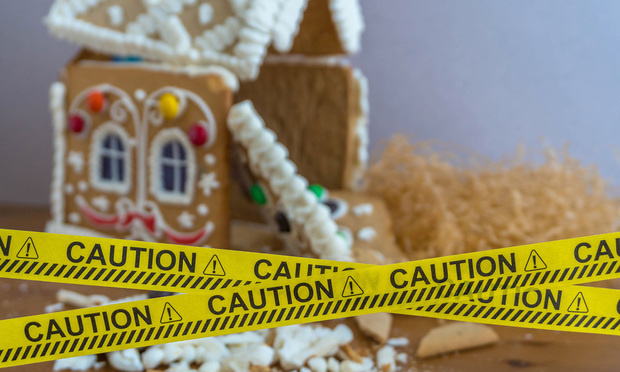NU Online News Service, Aug. 16, 3:22 p.m. EDT
Property and casualty insurance rates are on the rise. This point is indisputable. But reports released in late July through August seem unsure of whether the pricing trend will build into sustained underwriting profits during a period of rising loss costs and low investment returns.
On July 31, The Council of Insurance Agents and Brokers released its second-quarter Commercial Property and Casualty Index Survey, which put average rate increases for the period at 4.3 percent.
Small and medium size accounts saw rate increases of 4.3 percent and 4.9 percent respectively, compared to increases of 4.2 percent and 4.9 percent for the prior year's second quarter. Large accounts were up 3.7 percent.
Ken A. Crerar, president and chief executive officer of CIAB, said in a statement, “Rates continued to climb as insurers tightened reins on underwriting. More business was being pushed into the surplus-lines market as carriers pulled back on capacity, particularly for catastrophe exposures.”
On Aug. 7, MarketScout released its Market Barometer for July, showing that commercial lines were up by an average of 4 percent compared to the same month a year ago for the third month in a row, with all lines of business increasing by single digits.
Later in the month, analyst firms Keefe, Bruyette & Woods and Stifel Nicolaus released reports stating that they are seeing and expect to continue to see increasing rates.
But observers are not in complete agreement about what the rate increases mean and how much momentum the current environment has.
Commenting on the July MarketScout Barometer, Meyer Shields, an analyst with Stifel Nicolaus, said, “We see insurers' deteriorating calendar-year results as the primary catalyst for rate increases, and we expect these increases to accelerate as favorable reserve development subsides and accident-year results edge worse.”
But in Stifel Nicolaus' own report, which focused on the second-quarter decline in industry reserve releases, the firm noted that while insurers are reporting improved pricing, few, if any reported rate increases “that currently match or exceed claim-cost inflation.”
KBW's report, which highlights challenges insurers face despite rising rates and “OK” second-quarter earnings, notes that the industry's rate increases do not appear to be accelerating “as cat markets level off and clients generally are retaining more risk.”
In response to the second-quarter CIAB survey, James B. Auden, managing director at Fitch Ratings, said of the recent trend toward rate increases, “We wonder how much momentum there is.”
He said low interest rates producing small investment yields and declining favorable reserves would suggest increases continuing into at least early next year, but he stated that insurers will not see underwriting profitability until the industry gets to a combined ratio in the mid-90s.
And achieving underwriting profitability is looking like an important priority for insurers given other factors in the industry. KBW notes that investment income for the industry declined 3.4 percent in the second quarter, up from a 1.1 percent decline in the first quarter, owing to the current yield environment.
KBW stated that the low-investment yields “have crushed the traditional P&C business model of trying to break even on underwriting and making returns through investment income.”
But most observers agree that while a number of factors are pressuring the industry today, not enough has happened to push the industry to hard-market conditions that would drive the types of increases seen in the mid-2000s.
The issue is capital, says Robert Hartwig, president of the Insurance Information Institute.
“The fundamentals in the market are such that they do suggest that pricing does need to continue to firm, but there are no catalysts in place for a traditional hard market,” Hartwig said in response to the CIAB survey.
Auden agreed, stating, “We don't know if the current market has enough momentum to get back to [the hard market of mid-2000s] because of competitive factors and the amount of capital deployed in the P&C business.”
A hard market, he says, won't come until there is a drain in capital, and that will not happen unless there are insolvencies or unless the industry sees a monumental event to alter the dynamics of the marketplace.
In KBW's opinion, this means that weathering the storm will come down to effective underwriting. “With the industry likely to face more stress, individual companies will see their reserves, balance sheets and underwriting acumen tested,” the firm concluded.
Additional reporting by Mark E. Ruquet
Want to continue reading?
Become a Free PropertyCasualty360 Digital Reader
Your access to unlimited PropertyCasualty360 content isn’t changing.
Once you are an ALM digital member, you’ll receive:
- Breaking insurance news and analysis, on-site and via our newsletters and custom alerts
- Weekly Insurance Speak podcast featuring exclusive interviews with industry leaders
- Educational webcasts, white papers, and ebooks from industry thought leaders
- Critical converage of the employee benefits and financial advisory markets on our other ALM sites, BenefitsPRO and ThinkAdvisor
Already have an account? Sign In Now
© 2024 ALM Global, LLC, All Rights Reserved. Request academic re-use from www.copyright.com. All other uses, submit a request to [email protected]. For more information visit Asset & Logo Licensing.








